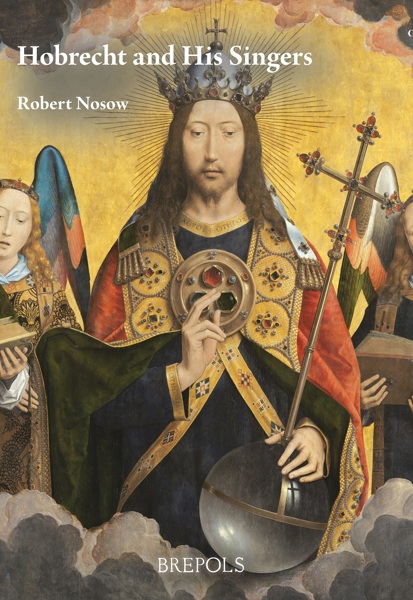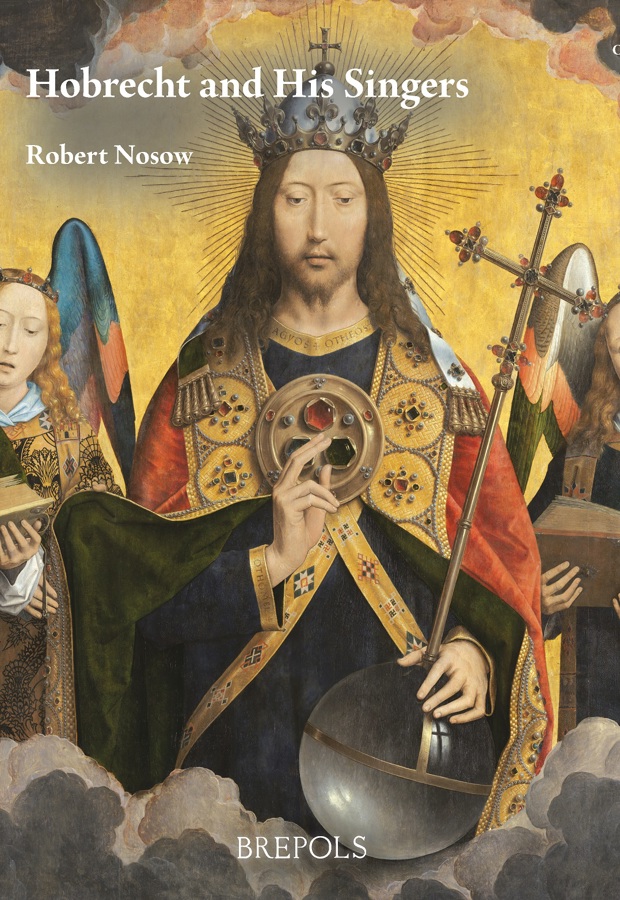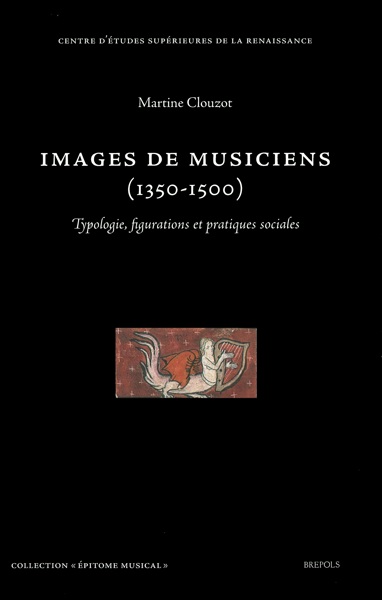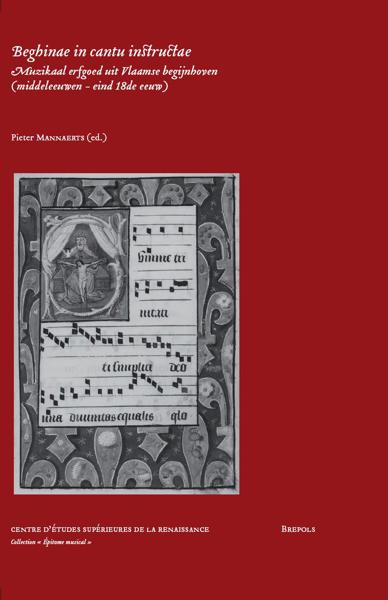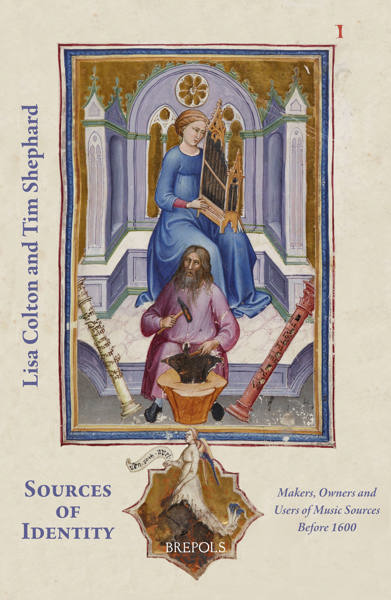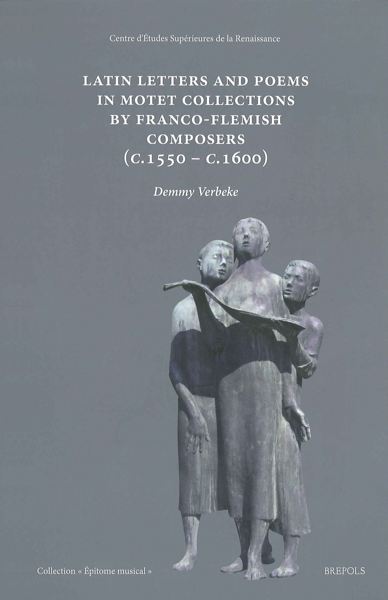
Hobrecht and His Singers
Robert Nosow
- Pages: 321 p.
- Size:178 x 254 mm
- Illustrations:9 b/w, 14 col., 27 tables b/w., 1 maps b/w, 19 musical examples
- Language(s):English
- Publication Year:2022
- € 55,00 EXCL. VAT RETAIL PRICE
- ISBN: 978-2-503-59702-7
- Paperback
- Available
A biography with extensive new documentation on the fifteenth-century composer Jacob Hobrecht (Jacobus Obrecht), framed by a social history and collective biography of the singers he worked with at the Church of St. Donatian in Bruges.
“Der Band bietet nicht nur eine beeindruckende Summe von Wissen und Einsichten, sondern auch zahlreiche anregende Anknüpfungspunkte für weitere Fragen.“ (Roman Lüttin, in Die Tonkunst, 17/1, 2023, p. 92)
“The book is handsomely produced, with colour illustrations in text, including the stunning Chapel of St Basil containing the relic of the Holy Blood, which survived since it was separate from the church, and Gerard David’s Virgin and Child with Saints and Donor, portraying the cantor Richardus de Capella. The musical life of Bruges was vibrant, and we owe thanks for Robert Nosow for bringing it to our attention in such great detail.” (Bonnie J. Blackburn, December 2022)
“The book is beautifully produced, with colour illustrations (including plates from Bruges plainchant books) and numerous musical examples. (…) the fruits of a conscientious and considered project that brings archival and music research into a rich, dynamic dialogue. In that sense it is approachable in the best sense, fit to be read by a wider audience than the merely specialist. And to those who love Obrecht’s music as much as his most distinguished patrons evidently did, this book brings still more information about their flawed yet loveable hero.” (Fabrice Fitch, in Early Music, December 2022)
“This book will be interesting for scholars of both music and history as well as early-music lovers. Specialists will appreciate its dense text to the fullest, especially the large number of transcriptions of the archival documents in Latin and Dutch included at the end.” (Emily Thelen, in Early Music America, 16/10/2023)
Robert Nosow has written widely on fifteenth-century Latin polyphony, the interrelationships of written and oral traditions, and the social history of early music, including “The Debate on Song in the Accademia Fiorentina” in Early Music History and “Song and the Art of Dying“ in Musical Quarterly. A monograph, Ritual Meanings in the Fifteenth-Century Motet, was published by Cambridge University Press in 2012.
Hobrecht and His Singers frames the life of the illustrious composer Jacob Hobrecht (Obrecht) within a single institution, the Church of St. Donatian in Bruges. As a collective biography of the musicians at an important collegiate church in the late fifteenth century, the book will be of interest to readers of ecclesiastical, social, and urban history. Hobrecht twice served as succentor, or master of the choirboys, and twice was forced to leave the city—the first time in the wake of a devastating civil war, the second time in disgrace. The monograph focuses on the social and economic realities for the succentors and polyphonic singers, the Companions of Music, who worked closely together on a daily basis, during the years 1485–1505. Thick description provides a more comprehensive context for the lives of Jacob Hobrecht and seven musicians whose biographies are recounted here for the first time. Conflicts between the singers and the collegiate church to which they were pledged, driven in part by their emerging professional status circa 1500, helped lead to different career trajectories, in one case ending in tragedy. Numerous new documents add uncommon detail, both quotidian and dramatic, to the career of Hobrecht, necessitating original interpretations. Seven representative compositions written during his two periods in Bruges—both Masses and motets—demonstrate the kinds of work he undertook as succentor and the occasions for which he composed them, poised at the intersection of church and urban culture.
List of Illustrations
List of Musical Examples
List of Tables
Notes on the Text
Prologue
I The Church of St. Donatian, 1485–1505: Social and Economic Considerations
1 The Succentor
The Lof2 The socii de musica and tenoristeA New Foundation for the Choirboys
Responsibilities and Income
Composition
The clerici installatiII Jacob Hobrecht, SuccentorThe Chaplains
The socii de musica
The tenoriste
Annual Feasts and Ceremonies
3 Jacob Hobrecht, 1485–1490
Recruitment from CambraiThe Daily Round
Alma redemptoris mater
Three Royal EntriesReturn from Ferrara
Chaplaincy
The Poaching of a Choirboy4 Jacob Hobrecht and the Fall of Bruges
Arrest and Imprisonment5 Pieter Basijn, the Missa de Sancto Martino, and the Missa Adieu mes amoursThe Missa de Sancto Donatiano
The Foundation for Saint Martin6 Jacob Hobrecht, 1499–1500A Mass of the Holy Spirit
Disarray in the Succentorship7 The May FairsTwenty Months
Cardinal Giovanni de’ Medici
The Chapel of Archduke Philip the Fair
Illness and Resignation
Chaplaincy
Provostship and a Motet
O preciosissime sanguis/Guberna tuosIII The Singers of a Collegiate Church, 1485–1505The Procession of 1501
8 The Singers and the Canons I
Petrus ZouburchGregorius MijsCristianus Baelde
Nicolaus Sarrigot
9 The Singers and the Canons II
Three tenoriste10 Anthonius de Rycke, 1501–1505Johannes de Clita
Petrus de Corte
SuccentorshipDocuments: Latin sources edited with the assistance of Tedd A. WimperisDeparture and Excommunication
Appendix: Inventory of Bruges, Grootseminarie Bibliotheek, MS 75-37, Processional
Bibliography of Primary Sources
Bibliography of Secondary Sources
Index of Musicians and Clerici installati
General Index
